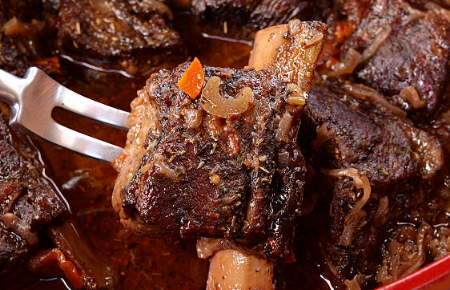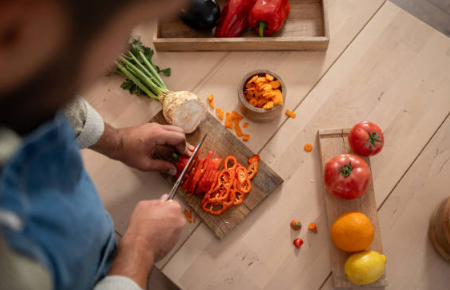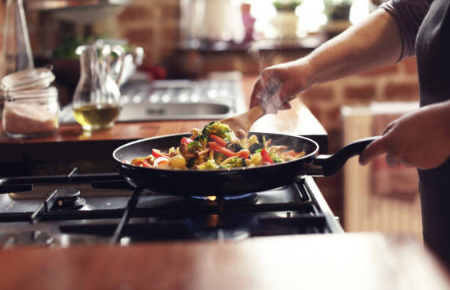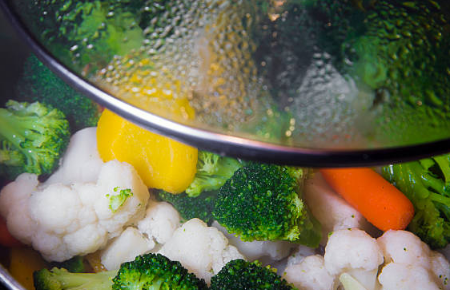How to Cook Delicious Braised Meat

How to Stir-Fry Vegetables
June 15, 2025
How to Cook Bell Peppers to Perfection
June 15, 2025Mastering the art of braising allows you to turn a hearty, humble cut of beef into a satisfying, elegant dish that’s perfect for sharing with family and friends. The best part is that there are many ways to braise meat, and no matter which method you use, the result will be tender, juicy, and packed with flavor. Plus, it’ll be just as delicious as the pricey cuts of meat you might buy at a higher cost.
In this guide, we’ll walk you through how to braise meat on the stovetop, as well as how to braise in the oven and slow cooker. We’ll also teach you how to adjust the process for a pressure cooker. With these skills, your Sunday dinners will be taken to the next level.
Best Meat for Braising
Braising is an ideal method for tougher cuts of meat, as it slowly transforms them into tender, melt-in-your-mouth bites. For beef, the most flavorful cuts for braising include chuck (the area between the neck and shoulder blade). These cuts include chuck roast, shoulder pot roast, and seven-bone roast. Look for cuts with good marbling for juicy, tender braised beef.

How to Braise Meat on the Stovetop
For a succulent, juicy pot roast, one foolproof method is to braise — that is, cook with a small amount of liquid in a tightly covered pot over low heat. Braising recipes are customizable depending on the herbs, vegetables, potatoes, and braising liquid mix you choose. Cooking on the stovetop requires minimal prep and doesn’t take long, but it’s simple and flavorful, making it a great weekend cooking project. We’re confident that once you try stovetop braising, you’ll love how the whole house fills with mouthwatering aromas — and all it takes is one pot!
Here’s how to braise on the stovetop, with adjustments for oven, slow cooker, or pressure cooker:
Step 1: Prepare the Meat
For most recipes that serve 6 to 8 people, you’ll need about 2.5 to 3 pounds of chuck roast, shoulder roast, or seven-bone roast. Trim off any excess fat with a sharp knife. Season the meat with salt and black pepper. In a 4 to 6-quart Dutch oven, heat 2 tablespoons of vegetable or olive oil over medium-high heat. Sear the meat on both sides until golden brown, filling the kitchen with a rich, savory aroma. Sprinkle a bit more salt and pepper, then sear the meat until it’s crisp on the outside.
Step 2: Sauté the Aromatics
When sautéing onions and garlic, be sure to scrape up the browned bits from the bottom of the pot with a wooden spoon — that’s where all the flavor is! This step adds an extra layer of richness to the dish when simmering on the stove.
Step 3: Braise the Meat on the Stovetop
Pour the braising liquid over the browned meat. Bring it to a boil, then reduce the heat to a low simmer. Cover the pot with a lid, and let it braise for about 1 hour. The key to a great braise is using just enough liquid to cover the sides of the meat without submerging it completely. Most braising recipes call for a mix of liquid, seasonings, and herbs.
Step 4: Add Potatoes and Vegetables
A common ratio for a family-sized meal is one pound of potatoes to one pound of vegetables. Cut the potatoes into 1- to 2-inch cubes and add them to the Dutch oven. Use tongs to add the vegetables to the cooking liquid.
Step 5: Continue Braising the Meat
Bring the liquid back to a boil, then reduce the heat and cover the pot. Let it braise for another hour, or until the meat becomes tender. Test with a fork to make sure the meat and vegetables are soft before removing them from the pot.

How to Make Braised Meat Gravy
This optional step is highly recommended, though. While you can enjoy the braised meat directly, we love drizzling it with a rich, savory gravy.
To make gravy from the leftover braising liquid, remove the meat and vegetables from the Dutch oven and place them on a serving dish, covering them loosely with foil to keep warm. Measure out the braising liquid, adding about 1.5 cups of water. Pour the liquid back into the Dutch oven. In a separate bowl, mix ½ cup cold water with ½ cup all-purpose flour. Whisk this mixture into the braising liquid. Bring to a boil, stirring until the gravy thickens and bubbles. Let it boil for an additional minute. Season with black pepper to taste. Serve the gravy with the braised meat and vegetables.
How to Braise in the Oven
Preheat your oven to 325°F (175°C). Follow the steps above, but for Step 3, cover the Dutch oven and place it in the oven to cook for 1 hour. (By the way, if you’re wondering whether the same Dutch oven works for braising in the oven, the answer is yes!) Add the vegetables and potatoes as directed. Cover the pot and continue roasting for 45 to 60 minutes, or until the meat becomes tender. Prepare the gravy on the stovetop as explained in Step 6.
How to Braise in a Slow Cooker
Follow Step 1 above; for Step 2, you can skip the searing. Simply prepare and trim the meat without browning it. Skip Step 3 entirely. Lay the vegetables in the bottom of the slow cooker, add the raw braising meat on top, and pour in the braising liquid. Cover with the lid and cook on low for 9 to 10 hours, or on high for 4.5 to 5 hours. Follow Step 6 for the optional gravy.
How to Braise in a Pressure Cooker
Follow Step 1 above. In Step 2, use the sauté function of your pressure cooker (e.g., Instant Pot) to brown the meat. Add the braising liquid, and place the rack in the pot. Set the meat on the rack, add the vegetables on top, and cover with the lid. Set the pressure cooker to high pressure and cook for 15 minutes. Let it sit for 15 minutes to naturally release the pressure, then release any remaining pressure. Scoop out the vegetables, and remove the meat from the pot. Follow Step 6 for making the optional gravy.
With these four braising methods, you’ll have a comforting, hearty recipe that covers everything from the main dish to starch and vegetable sides. Once it’s dinner time, just set the table, pop open a rich bottle of red wine, and enjoy the perfect Sunday night meal — the kind that leaves you fully satisfied as you prepare for the week ahead.



